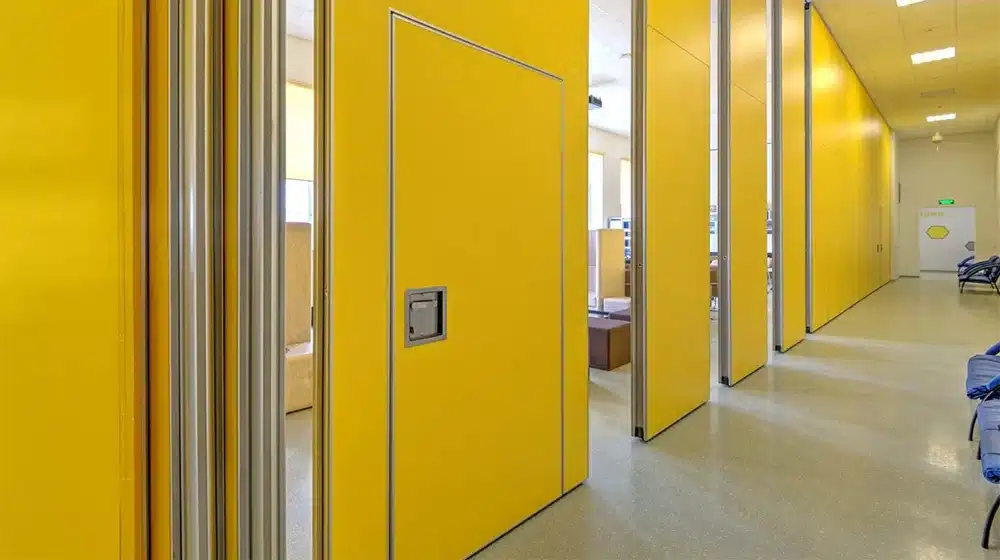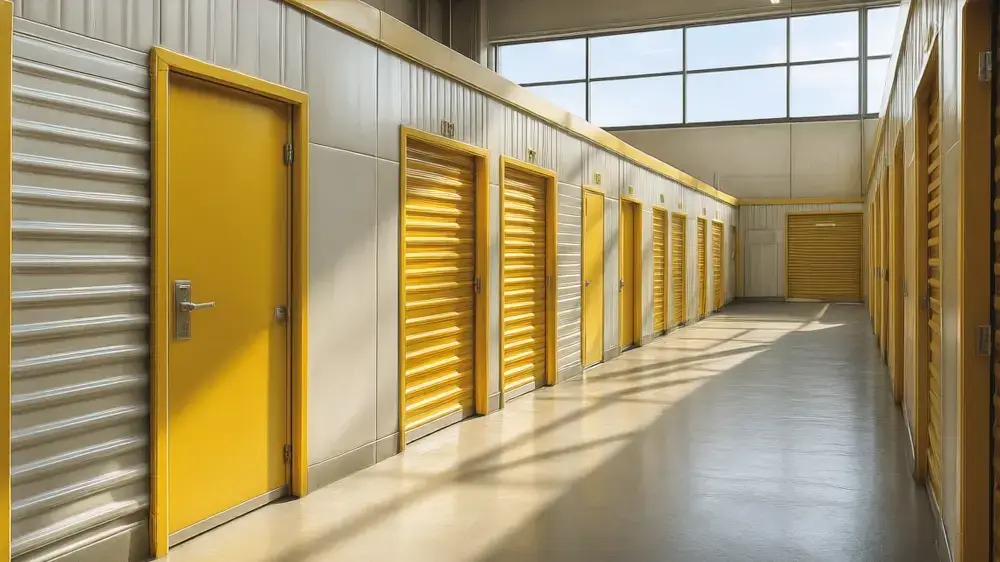Apartment living in the UAE, especially Dubai, is fast, flexible, and—at times—tight on space. With frequent job changes, short tenancy cycles, and a large expat community, many residents find themselves asking a simple question: What size storage unit do I actually need? Choosing the correct storage unit size is the difference between paying for empty air or cramming valuable furniture into a space that’s too small.
There’s also a climate angle unique to the region. Climate-controlled storage in Dubai is not a luxury; it’s protection. Summers can be harsh; unmanaged humidity risks warping wood, corroding electronics, and mildew on fabrics. Pick the right self-storage Dubai facility and the right unit size, and you’ll keep your home decluttered while your belongings stay safe.

Who this guide is for:
- Studio tenants looking for studio apartment storage without overpaying.
- Families in 1BHK, 2BHK, 3BHK, and 4BHK apartments who need a clear, practical map to the right storage unit size in Dubai.
- UAE residents comparing self-storage UAE options during renovations, relocations, or long trips abroad.
What you’ll walk away with: a size-by-size breakdown (with real examples), a comparison table of storage units in Dubai by size and typical contents, and an easy checklist for choosing a storage facility in Dubai with the right security, access, and climate controls.
Why Residents Use Self Storage in Dubai & the UAE (Migration, Space & Lifestyle)
Frequent relocations and expat churn
Dubai’s dynamic job market keeps apartments turning over. Many expats relocate in or out of the UAE, sometimes on short notice. Instead of selling furniture or shipping it twice, residents park their belongings in self-storage units in Dubai for a few months—simple, secure, cost-effective.
Rising rents and right-sizing
When rents push families from 2BHK to 1BHK apartments, the math is straightforward: downsizing the home and renting a 50–75 sq ft storage unit often costs less than staying in a bigger flat year-round. This is where storage units in Dubai become a smart financial bridge.
Renovations, refits, and upgrades
Renovations are dusty and disruptive. A 75–100 sq ft unit lets you store sofas, beds, cabinets, and appliances while your space gets upgraded—protecting items from dust, paint, and accidental damage.
Seasonal storage and lifestyle gear
From winter clothes and travel trunks to paddleboards and camping kits—self-storage in the UAE frees up everyday living space. Many residents rotate items seasonally, using 25–50 sq ft units for light, flexible needs.
Home office + micro-business overflow
Creators, freelancers, and small e-commerce sellers use mini-warehouse units for inventory, packaging materials, and pop-up event gear. It’s a cleaner setup than crowding the living room.
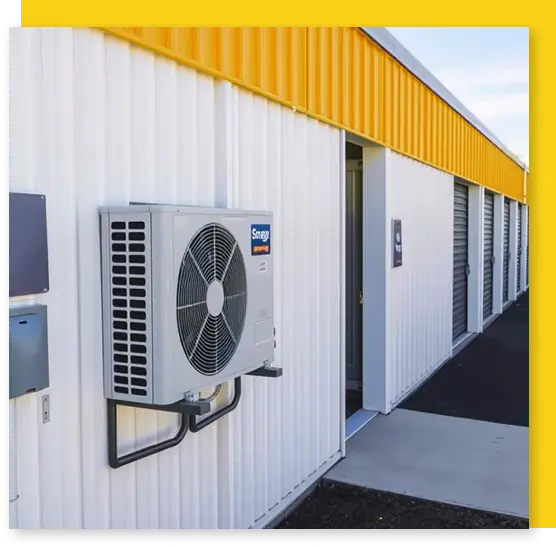
Storage Unit Sizes Explained by Apartment Type (With Real-World Examples)
Quick rule of thumb: a 25 sq ft unit roughly fits the contents of a walk-in closet; 50 sq ft handles a studio; 75–100 sq ft suits a 1BHK–2BHK; 125–150 sq ft is comfortable for a 3BHK; and 200–250 sq ft fits most 4BHK/villa contents.
Studio Apartments (≈ 400–600 sq ft)
Recommended size: 25–50 sq ft
- 25 sq ft (Locker-plus / small room): 10–15 medium boxes, seasonal clothes, compact shelving, suitcases, a small desk chair, microwave.
- 50 sq ft (Half-room feel): Single bed or sofa, compact wardrobe, TV stand, mini-fridge, ~15–20 boxes.
Best for: Single professionals, students, and frequent travelers.
Studio storage tip: Disassemble furniture legs and label hardware. Stack boxes by weight (heaviest at the bottom). Use breathable covers to avoid condensation.
When to choose 25 vs 50 sq ft:
- If your studio is lightly furnished and you’re storing mostly boxes/clothes → 25 sq ft.
- If you’re storing a bed + sofa + appliances → 50 sq ft.
1BHK Apartments (≈ 700–900 sq ft)
Recommended size: 50–75 sq ft
- What fits in 50 sq ft: 1 queen bed, small sofa, TV unit, wardrobe, 10–15 boxes, small appliances (microwave, vacuum).
- What fits in 75 sq ft: Add a dining table + extra wardrobe or a chest of drawers, ~20+ boxes.
Best for: Couples, new parents, long trips abroad, or short-term relocations.
1BHK storage tip: Wrap mattresses and sofas with breathable covers. Add desiccant packs inside wardrobe boxes. Keep electronics off the floor (use pallets or shelves).
Choose 50 vs 75 sq ft based on:
- Dining table + spare wardrobes + kids’ gear? → 75 sq ft.
- Minimal furniture, mostly boxes? → 50 sq ft.
2BHK Apartments (≈ 1,000–1,300 sq ft)
Recommended size: 75–100 sq ft
- 75 sq ft scenario: 2 beds (frames disassembled), 1 sofa, 1 wardrobe, dining table (disassembled), large appliances (fridge/washer), ~15–20 boxes.
- 100 sq ft scenario: All of the above plus an outdoor furniture set, an extra bookshelf, additional wardrobes, and 20–30 boxes.
Best for: Families renovating, residents between leases, or storing for several months during travel.
2BHK storage tip: Map items by zones (bedrooms, living room, kitchen). Pack room-by-room and label all sides of each box. Photograph complex assemblies (bunk beds, modular closets) before dismantling.
3BHK Apartments (≈ 1,400–1,800 sq ft)
Recommended size: 125–150 sq ft
- 125 sq ft scenario: 3 beds, 2–3 wardrobes, large sofa set, dining set, appliances, ~25–35 boxes.
- 150 sq ft scenario: Everything above plus outdoor furniture, nursery items, sports gear, carpet rolls, and 35–45 boxes.
Best for: Full family households, long-term relocations, and major refurbishment projects.
3BHK storage tip: Think vertical. Use sturdy shelving inside the unit to keep boxes accessible. Store sofas on end (with padding) to reclaim floor space.
4BHK Apartments & Villas (≈ 2,000+ sq ft)
Recommended size: 200–250 sq ft (and beyond for villas/mini-warehouse)
200–250 sq ft scenario: 4 beds, multiple wardrobes, large sectional sofa, full dining suite, outdoor furniture, appliances, 50+ boxes, hobby/sports gear. If you have business stock or bulky outdoor items, consider mini-warehouse storage units in Dubai for easier loading bays and pallet access.
Best for: Families relocating abroad, long storage durations, or complex households with mixed personal + hobby/inventory needs.
4BHK storage tip: Create an A/B/C access map—A = items you’ll retrieve in the next 30–60 days (place near the door); B = items needed occasionally (center); C = long-term/deep storage (back corners).
Storage Unit Size Calculator: Find the Perfect Fit for Your Apartment in Dubai
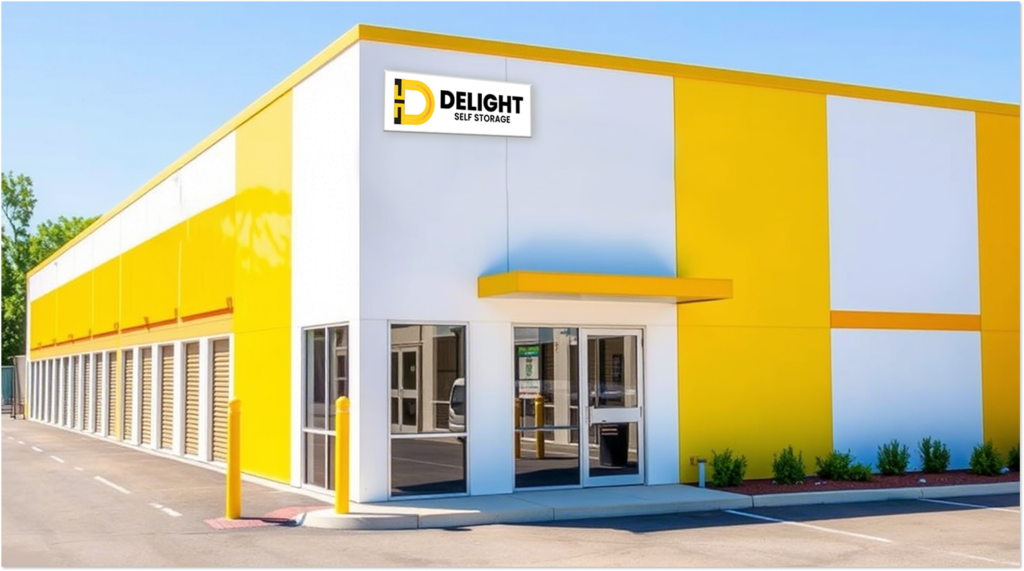
Why Guessing Storage Size Costs You Money
If you’re renting self-storage in Dubai or anywhere in the UAE, one of the biggest mistakes you can make is guessing the size you need. Too small, and you’ll cram your belongings, risking damage. Too big, and you’ll end up paying for space you never use — sometimes AED 200–400 extra every month.
Dubai residents, especially expats in studios, 1BHKs, 2BHKs, and villas, face unique challenges. Apartments are compact, villas have bulky furniture, and the UAE climate makes climate-controlled storage almost mandatory. That’s why a simple calculator approach to storage unit sizing can save you time, money, and stress.
Step 1: Count Large Items
The biggest space consumers in any home are the large furniture items. Before you even think about boxes, list out what you’ll actually be putting into storage.
- Beds: A queen or king bed frame + mattress takes ~35–50 sq ft once stacked upright.
- Sofas: A 3-seater sofa averages 20–30 sq ft; sectional sofas can take 40–60 sq ft.
- Wardrobes: Freestanding wardrobes consume 10–15 sq ft each.
- Dining tables: Disassembled, ~10–15 sq ft, plus 4–6 chairs (~10 sq ft).
- Appliances: Refrigerators, washing machines, dryers = ~10–15 sq ft each.
Tip: Disassemble furniture where possible. Removing legs and folding bed frames can cut the footprint in half.
Step 2: Add Boxes & Small Appliances
Once you’ve calculated big items, estimate the number of boxes you’ll need. Clothes, books, kitchen items, décor, and electronics all add up.
Rule of thumb:
- 4 medium boxes (50-liter size) ≈ , 1 sq ft footprint when stacked.
- Small appliances (toaster, microwave, fans) = 1–2 sq ft each.
Example: A studio with 15 boxes and 2 small appliances adds ~5 sq ft to your total.
Step 3: Factor in Access Space
Here’s where most people go wrong. They fill every inch of their unit floor to ceiling, leaving no walkway.
- Always add 10–15% extra space for aisles, stacking, and safe access.
- Without access space, you’ll need to unpack half the unit just to reach one box at the back.
Think of your unit like a mini-warehouse — not just a storage closet.
Storage Size Calculator Table
| Household Contents | Estimated Unit Size |
|---|---|
Studio + 10–15 boxes | 25–50 sq ft |
1BHK + 20 boxes | 50–75 sq ft |
2BHK full contents | 75–100 sq ft |
3BHK full contents | 125–150 sq ft |
4BHK villa contents | 200–250 sq ft |
Costs vary, but on average:
- 25–50 sq ft: AED 350–600/month.
- 50–75 sq ft: AED 700–1,000/month.
- 75–100 sq ft: AED 1,000–1,300/month.
- 125–150 sq ft: AED 1,500–2,000/month.
- 200–250 sq ft: AED 2,500+/month.
(Always confirm VAT inclusions, deposits, and climate control.)
Why a Calculator Approach Helps UAE Residents
- Save Money: Avoid overpaying by booking the right size. Many residents spend AED 200–400 more monthly because they chose oversized units.
- Reduce Stress During Moves: Knowing your exact needs helps movers (or yourself) load efficiently.
- Match Storage to Climate Needs: Electronics, wood furniture, and fabrics all require climate-controlled storage in Dubai. Calculating your items ensures you don’t compromise.
- Plan for Flexibility: With the right estimate, you can choose facilities that allow easy upgrades/downgrades.
Real-Life Examples from Dubai
Expat couple in JLT (1BHK)
Downsized to a smaller apartment, stored the sofa, bed, and 15 boxes. Needed a 75 sq ft unit for AED 900/month.
Family in Arabian Ranches (3BHK)
Renovating villa, stored full household + outdoor furniture. Booked a 150 sq ft climate-controlled unit for AED 1,800/month.
Student in Dubai Marina (Studio)
Stored bed, suitcase, and 12 boxes during summer break. Booked a 25 sq ft locker-style unit for AED 400/month.
Comparison Table: Apartment Type × Storage Unit Size × What Fits × Typical Cost
(Ranges vary by provider, neighborhood, access hours, and whether the unit is climate-controlled. Confirm quotes are VAT-inclusive.)
Apartment Type | Recommended Storage Size | What Fits (Typical) | Typical Monthly Cost (AED) |
|---|---|---|---|
Studio | 25–50 sq ft | 10–20 boxes, single bed/sofa, compact wardrobe, small appliances | 350–600 |
1BHK | 50–75 sq ft | Queen bed, sofa, TV unit, dining table, wardrobe, 15–20 boxes | 700–1,000 |
| 2BHK | 75–100 sq ft | 2 beds, wardrobes, sofa set, dining set, fridge/washer, 20–30 boxes | 1,000–1,300 |
3BHK | 125–150 sq ft | 3 beds, multiple wardrobes, large sofa, outdoor set, appliances, 30–45 boxes | 1,500–2,000 |
4BHK/Villa | 200–250 sq ft+ | Full household contents, outdoor furniture, 50+ boxes; consider mini-warehouse | 2,500+ |
Cost-control tip: If your items are mostly boxed (documents, clothes, books) and you rarely need access, compare box storage in Dubai vs self-storage rooms. Box storage can be cheaper for light, long-term needs; rooms give you control and flexibility for mixed furniture + boxes.
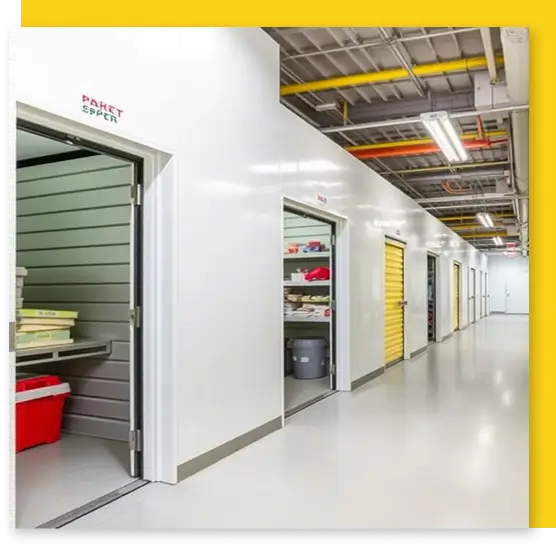
Challenges Residents Face (And How to Solve Them)
Challenge 1: Misjudging the storage unit size
Problem: Underestimate the footprint of beds/wardrobes; overestimate how high you can stack safely.
Fix: Use the mini-calculator above. Add 10–15% for aisles and safe stacking. When in doubt, pick the next size up (e.g., 75 sq ft instead of 50 sq ft).
Challenge 2: Heat & humidity risk in non-climate units
Problem: Warping wood, mildew on fabrics, battery corrosion, and adhesive failures.
Fix: Prioritize climate-controlled storage in Dubai. Use breathable covers, avoid plastic wrap on wood, and add desiccants (and replace them periodically).
Challenge 3: Hidden costs & unclear contracts
Problem: Deposits, padlock fees, admin charges, compulsory insurance, late fees, and +5% VAT surprises.
Fix: Request an all-in monthly quote (rent + VAT + any fees). Confirm notice period, deposits, and refund timelines—in writing.
Challenge 4: Limited access or inconvenient locations
Problem: Not all storage facilities in Dubai offer 24/7 access; some are far from your neighborhood.
Fix: If you live in Marina/JLT/Barsha, look at Al Quoz/JLT options; if you’re in Arabian Ranches/DAMAC Hills, consider DIP; for Abu Dhabi, Mussafah is common. Balance access hours, commute time, and price.
Challenge 5: Security confidence
Problem: Vague answers about CCTV, alarm response, or fire monitoring.
Fix: Ask for SIRA-aligned CCTV details (coverage zones + retention) and evidence of Civil Defence monitoring. Reputable self-storage Dubai providers are transparent.
How to Choose the Right Self Storage Provider in Dubai/UAE (Checklist)
Climate control (must-have for furniture/electronics)
- Ask for temperature and humidity ranges, not just “AC available.”
- Look for sealed, insulated corridors; ask how they monitor and log climate.
Security & compliance
- Coverage of entrances/exits, corridors, lifts, and loading bays; minimum retention period.
- Unique PINs, door alarms, visitor logs.
- Monitored alarms, extinguishers, sprinklers where applicable; routine maintenance logs.
Transparent pricing
- Request a VAT-inclusive quote with all fees.
- Clarify deposit, notice period, late charges, and lock/insurance costs.
Access hours and convenience
- True 24/7 vs extended hours (e.g., 7 am–11 pm).
- Parking/loading bay availability; lift size and trolley access.
Unit flexibility and upgrades
- Can you upsize or downsize mid-term without penalties?
- Are short-term storage extensions easy if your renovation runs over?
Instant red flags to walk away from:
The corridor feels cool, but the unit interior is warm or stuffy.
No written evidence of monitoring or maintenance.
VAT not clearly stated; vague “fees later.”
Evasive answers about CCTV coverage or access logs.
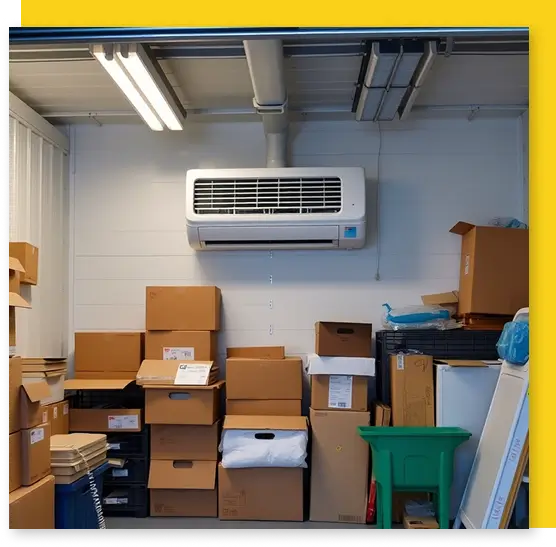
Pro Tips to Maximize a Small Storage Unit (And Save Money)
- Go vertical: Add freestanding shelves to a 50–75 sq ft unit; it doubles usable space and keeps boxes accessible.
- Disassemble: Remove table legs, headboards, and wardrobe panels; bag and label screws with painter’s tape.
- Uniform boxes: Standardize box sizes (easier to stack safely). Avoid over-packing heavy books; mix light items to keep stacks stable.
- Protect fabrics: Use breathable cotton covers; place a clean sheet under upholstered pieces; avoid direct floor contact with pallets or risers.
- Create an aisle: Even a 30–40 cm walkway saves hours later. Keep “soon-needed” items near the door.
- Inventory list: A simple spreadsheet with box numbers and contents (Room–Box–Notes) saves hunting time. Snap photos before closing the unit.
Conclusion: A Right-Sized Unit = Lower Cost, Less Stress, Safer Belongings
Choosing the right storage unit size in Dubai keeps your budget steady and your belongings protected. If you live in a studio, aim for 25–50 sq ft. For 1BHK, pick 50–75 sq ft. 2BHK households typically need 75–100 sq ft, while 3BHK families fit best in 125–150 sq ft. For 4BHK apartments and villas, plan 200–250 sq ft or a mini-warehouse.
Match that size with climate-controlled storage, clear VAT-inclusive pricing, and solid security (CCTV, access controls, monitored alarms). Add a simple inventory, pack smart, and keep a small aisle—future-you will thank you.
Final tip: If your estimate is borderline, size up slightly. It’s cheaper than replacing damaged furniture or renting a second unit later.
Frequently Asked Questions (FAQs)
What size storage unit do I need for a studio apartment in Dubai?
A 25–50 sq ft unit is usually enough for furniture, boxes, and appliances.
How much space does a 1BHK apartment need for storage?
Most 1BHK contents fit comfortably in a 50–75 sq ft storage unit.
What storage size works for a 2BHK home in Dubai?
A 75–100 sq ft unit is recommended for two bedrooms, living room furniture, and appliances.
Which storage size is ideal for a 3BHK apartment?
A 125–150 sq ft unit is best for three bedrooms, wardrobes, large sofas, and 30+ boxes.
How big a unit do I need for a 4BHK or villa?
A 200–250 sq ft unit (or larger warehouse) is required for full household contents and outdoor furniture.
Are climate-controlled storage units in Dubai worth it?
Yes, they’re essential to protect furniture, fabrics, and electronics from heat and humidity damage.
How much does storage cost in Dubai per month?
Prices range from AED 350 for 25 sq ft to AED 2,500+ for 200–250 sq ft units, plus 5% VAT.
Can I store my items short-term, like just for a few months?
Yes, most self-storage Dubai providers offer flexible month-to-month rentals.
What’s the difference between box storage and self-storage rooms?
Box storage is cheaper for small items (documents, clothes), while rooms are better for mixed furniture + frequent access.
Do Dubai storage companies provide insurance for stored items?
Some do, but it’s often optional; always confirm and consider insuring valuables separately.
